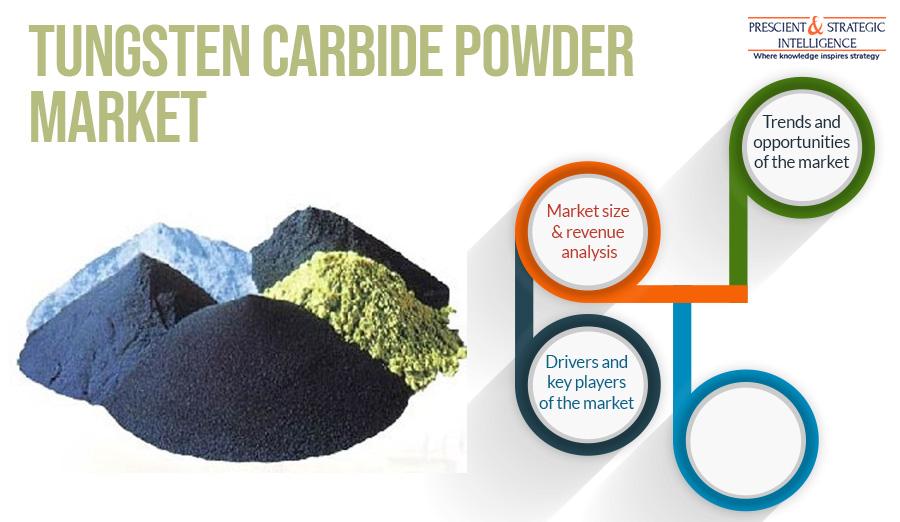The discovery of metals played an important role in the advancement of the human civilization, by taking people away from the primitive stone tools. Therefore, the metalworking industry has been undergoing continuous growth since at least 2,000 BC. From simple kitchen tools to mega machines, a wide variety of stuff is made of metals. These materials need to be cut, carved, shaved, melted, and molded into a variety of shapes and sizes in order to manufacture the final object.
Therefore, P&S Intelligence sees bright prospects for the tungsten carbide powder market in the years to come. This is because the material is widely used to manufacture drills, molds, abrasive tools, cutting tools, punches, and dies. Tungsten carbide has a high thermal conductivity and stiffness and strong resistance against acetone, gasoline, ethanol, water, ammonia, organic solvents, and weak acids. Therefore, any industry that works with metal requires tools coated with this material, which is driving its consumption.
In this regard, the growing automotive production is a key factor driving the demand for this chemical. Automotive plants need to cut, shape, and drill into metals all through the production process. As a result, they widely procure drills, industrial knives, hammers, jig saws, circular saws, and grinders coated with tungsten carbide. Around the world, people’s rising purchasing power continues to push up the sale of cars, two-wheelers, trucks, and buses, which is propelling the demand for metalworking tools.
To receive free sample pages of this report@ https://www.psmarketresearch.com/market-analysis/tungsten-carbide-powder-market/report-sample
Another key industry where tungsten-carbide-coated cutting and drilling tools are used is oil and gas. During exploration and production (E&P), the ground or seabed is drilled into to reach the fossil fuel reserves. Since the reserves are often at great depths and topped by hard rocks, the drills need to be really strong. Moreover, cutting tools are widely used for manufacturing pipes and laying them from the fossil fuel reserve to a central depot or the port and then within refineries.
Another area where the application of this material is rising is 3D printers. With the cost and other advantages 3D printing, or additive manufacturing, offers, its usage is burgeoning in the aerospace & defense, automotive, and many other industries. The technology reduces material wastage and allows for the production of complex parts in one go, rather than having to manufacture the individual components and then weld or fasten them together. Tungsten carbide is now being used to manufacture the nozzles of 3D printers as this material has numerous benefits over steel.
Therefore, Asia-Pacific (APAC) is the largest tungsten carbide powder market right now, and the same situation is predicted in the coming years. Around the world, APAC is home to the largest manufacturing sector, which results in a high demand for cutting and drilling tools. Similarly, the largest number of automobiles are produced in the region due to the rising demand for them. Similarly, India and China are making heavy investments in their infrastructure sector for public good.

